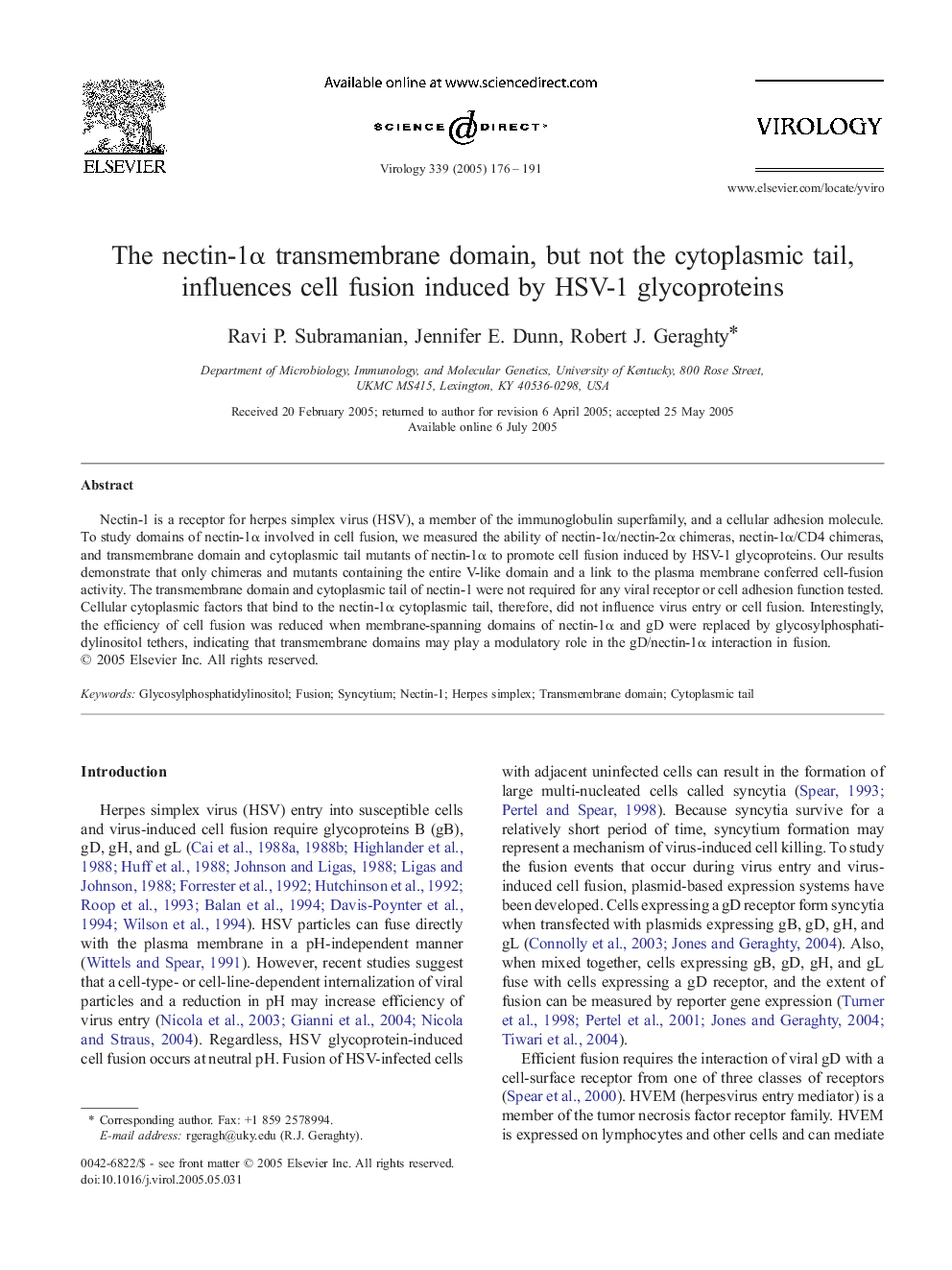| Article ID | Journal | Published Year | Pages | File Type |
|---|---|---|---|---|
| 9288032 | Virology | 2005 | 16 Pages |
Abstract
Nectin-1 is a receptor for herpes simplex virus (HSV), a member of the immunoglobulin superfamily, and a cellular adhesion molecule. To study domains of nectin-1α involved in cell fusion, we measured the ability of nectin-1α/nectin-2α chimeras, nectin-1α/CD4 chimeras, and transmembrane domain and cytoplasmic tail mutants of nectin-1α to promote cell fusion induced by HSV-1 glycoproteins. Our results demonstrate that only chimeras and mutants containing the entire V-like domain and a link to the plasma membrane conferred cell-fusion activity. The transmembrane domain and cytoplasmic tail of nectin-1 were not required for any viral receptor or cell adhesion function tested. Cellular cytoplasmic factors that bind to the nectin-1α cytoplasmic tail, therefore, did not influence virus entry or cell fusion. Interestingly, the efficiency of cell fusion was reduced when membrane-spanning domains of nectin-1α and gD were replaced by glycosylphosphatidylinositol tethers, indicating that transmembrane domains may play a modulatory role in the gD/nectin-1α interaction in fusion.
Keywords
Related Topics
Life Sciences
Immunology and Microbiology
Virology
Authors
Ravi P. Subramanian, Jennifer E. Dunn, Robert J. Geraghty,
